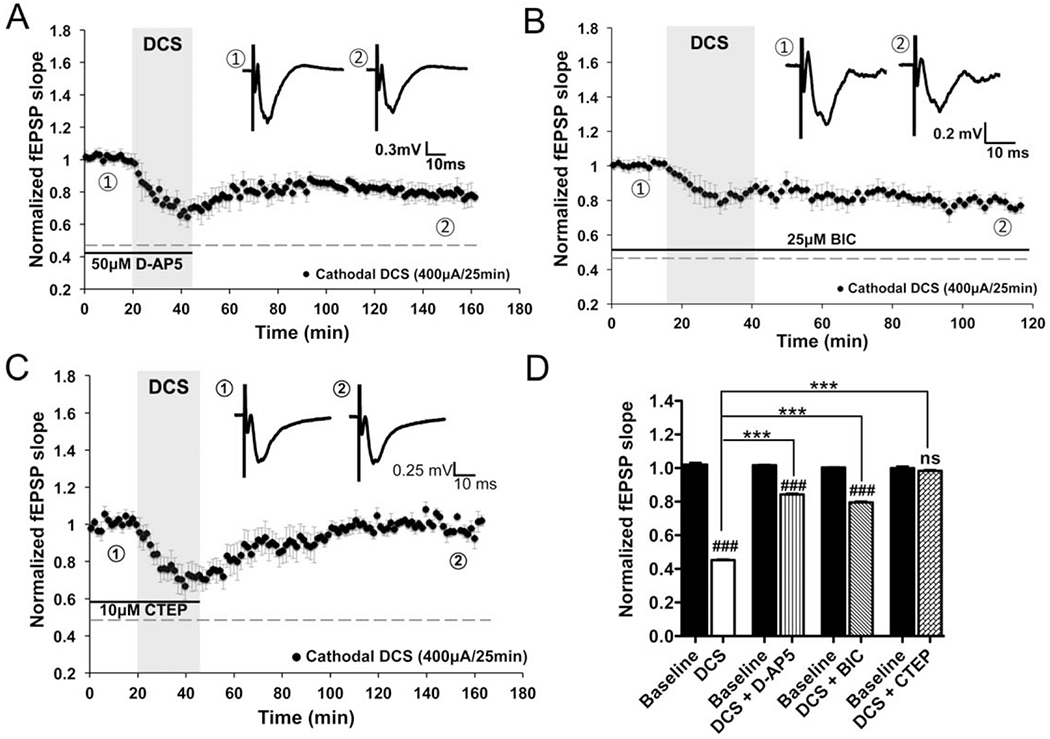FIGURE 4:

Direct current stimulation-induced long-term depression (DCS-LTD) depends on metabotropic glutamate receptor 5 (mGluR5) activation in mouse M1 slices. (A, B) DCS-LTD effect can be elicited by cathodal DCS with treatment by either 50μM D-(–)-2-amino-5-phosphonopentanoic acid (D-AP5; slopes were decreased to 84.3 ± 0.7% of baseline; n = 5 mice, 7 slices; p < 0.001) or 25μM bicuculline (BIC; 79.6 ± 0.7% of baseline; n = 5 mice, 6 slices; p < 0.001), antagonists of N-methyl-D-aspartate receptor and γ-aminobutyric acid type A receptor, respectively. (C) Bath application of mGluR5 negative allosteric modulator (2-chloro-4-[(2,5-dimethyl-1-[4-(trifluoromethoxy)phenyl]-1H-imidazol-4-yl)ethynyl]pyridine [CTEP], 10μM) completely abolished DCS-LTD in M1 slices (98.3 ± 0.7% of baseline; n = 7 mice, 10 slices; p > 0.05). Black bars under the traces in A–C indicate timing of drug exposure. (D) Statistical analysis of DCS-LTD changes on specific drug conditions (F7,56 = 423.2, p < 0.001); 1-way analysis of variance (ANOVA) post-test between each treatment and its baseline, ### = p < 0.001 and ns = p > 0.05; 1-way ANOVA post-test between 2 means as indicated in the graph, ***p < 0.001. fEPSP = field excitatory postsynaptic potential.
